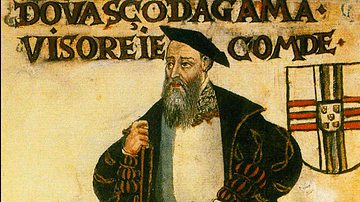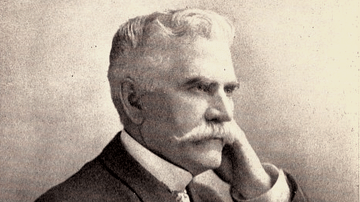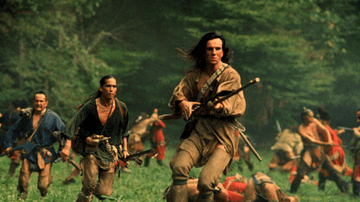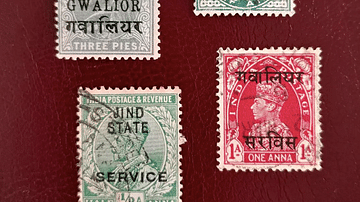Search
Search Results

Definition
Vasco da Gama
Vasco da Gama (c. 1469-1524) was a Portuguese navigator who, in 1497-9, sailed around the Cape of Good Hope in southern Africa and arrived at Calicut (now Kozhikode) on the south-west coast of India. This was the first direct voyage from...

Image
James McLaughlin, US Indian Inspector
James McLaughlin (l. 1842-1923), US Indian Inspector of the Bureau of Indian Affairs, best known for ordering the arrest of the Sioux Chief Sitting Bull in December 1890 and requesting the troops that participated in the Wounded Knee Massacre...

Article
Hesiod on the Birth of the Gods
The Greek poet Hesiod (c. 700 BCE) is most famous for his works Theogony and Works and Days. In this passage from Theogony, Hesiod relates the birth of the gods from cosmic Chaos and follows the lineage through the great Zeus, King of the...

Collection
Trade & Commerce in Ancient Greece
The ancient Mediterranean was a busy place with trading ships sailing in all directions to connect cities and cultures. The Greeks were so keen on the rewards of trade and commerce that they colonized large parts of the coastal Mediterranean...

Image
North America in the French and Indian War 1754–1763 - A Colonial War and the Roots of American Revolution
This map illustrates the course and key developments of the French and Indian War (1754–1763), the North American theater of the global Seven Years' War between Great Britain and France. It shows the territorial struggles, shifting alliances...

Image
Indian Massacre of 1622
Indian Massacre of 1622. A colorized version of a woodcut by Matthaeus Merian published along with Theodore de Bry's earlier engravings in a book on the New World, 1628. The engraving shows the 1622 massacre when Powhatan Indians attacked...

Image
A Battle During the French and Indian War
Daniel Day-Lewis, Russell Means, and Eric Schweig in The Last of the Mohicans (1992). Photo by Morgan Creek Productions.
The movie is set in 1757 during the French and Indian War.

Image
North American Indian Warrior by John White
An illustration by John White (d. 1593 CE) of a North American Indian warrior seen by the first English colonists who attempted to establish a settlement, Roanoke Colony, in 1585 CE (and again in 1587 CE). The colony was located in what is...

Image
Indian Princely States Postage Stamps
Four examples of British India postage stamps issued with overprints for use in particular Indian princely states. Top left: Queen Victoria, Gwalior, 1904 Top right: Queen Victoria, Patiala, 1895 Bottom left: King George V, Jind State...

Image
Map of the Indian Rebellion of 1857 - Published by J. Barthelemier, Paris
This antique map of India illustrates the Indian Rebellion of 1857, also known as the Sepoy Mutiny. It was published by J. Barthelemier, successor to Ch. Picquet. The map provides a geographical overview of the uprising, reflecting key locations...